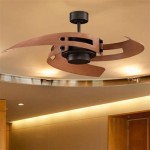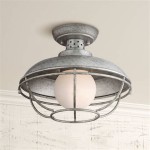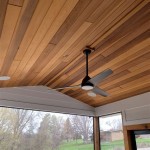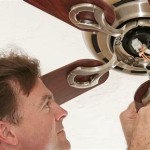What Size Ceiling Fan Do I Need For My Living Room?
Selecting the appropriate size ceiling fan for a living room is crucial for optimal air circulation and energy efficiency. A fan that is too small will not adequately cool or heat the space, while a fan that is too large can create an uncomfortable and disruptive draft. Determining the correct size involves considering the room's dimensions, ceiling height, and desired airflow.
Several factors influence the ideal ceiling fan size. These include the square footage of the living room, the height of the ceiling, the climate in which the residence is located, and personal preferences for airflow. Ignoring these factors can result in a less than satisfactory experience, with either insufficient air movement or excessive noise and drafts.
The primary function of a ceiling fan is to circulate air. In warmer months, a ceiling fan running counter-clockwise creates a cooling effect by circulating air and promoting evaporation from the skin. In cooler months, reversing the fan's direction to clockwise at a low speed helps distribute trapped warm air from the ceiling throughout the room, reducing the need for supplemental heating. A properly sized fan will accomplish these tasks more efficiently and effectively.
Calculating Square Footage and Blade Span
The most fundamental step in determining the correct ceiling fan size is to calculate the square footage of the living room. This is achieved by multiplying the room's length by its width. For example, a living room that is 12 feet long and 15 feet wide has a square footage of 180 square feet (12 ft x 15 ft = 180 sq ft). Once the square footage is known, it can be used as a guideline for selecting the appropriate blade span of the ceiling fan.
The blade span refers to the diameter of the circle created by the fan blades as they rotate. Ceiling fan manufacturers typically provide recommendations for blade span based on room size. These recommendations serve as a starting point for determining the ideal fan size. Ignoring these recommendations can lead to inadequate airflow or an excessively powerful fan that is uncomfortable to use.
As a general rule, the following guidelines apply:
- Rooms up to 75 square feet: A ceiling fan with a blade span of 36 inches or less is typically sufficient. These smaller fans are suitable for very small living rooms, breakfast nooks, or home offices.
- Rooms between 76 and 144 square feet: A ceiling fan with a blade span of 42 to 48 inches is usually appropriate. This is a common size range for many standard-sized living rooms.
- Rooms between 144 and 225 square feet: A ceiling fan with a blade span of 50 to 54 inches is recommended. This size provides adequate airflow for larger living rooms.
- Rooms larger than 225 square feet: A ceiling fan with a blade span of 56 inches or greater is generally needed. For very large living rooms, multiple ceiling fans may be necessary to provide adequate air circulation throughout the entire space.
These guidelines are not absolute, and other factors, such as ceiling height and personal preferences, should also be considered. However, they provide a useful starting point for narrowing down the options and selecting a ceiling fan that is appropriately sized for the living room.
Considering Ceiling Height and Downrods
Ceiling height is another critical factor in determining the appropriate ceiling fan size and installation method. The distance between the floor and the ceiling can significantly impact the fan's effectiveness and safety. Generally, a ceiling fan should be installed with a minimum clearance of 7 feet from the floor to the bottom of the fan blades.
In living rooms with standard 8-foot ceilings, a flush-mount or hugger-style ceiling fan is often the best option. These fans are designed to be installed close to the ceiling, maximizing headroom and ensuring that the fan blades are at a safe height. Flush-mount fans are particularly suitable for rooms where space is limited and a lower profile is desired.
For living rooms with higher ceilings, such as those taller than 9 feet, a downrod is typically necessary. A downrod is a metal extension pole that suspends the ceiling fan lower from the ceiling, positioning the blades at an optimal height for air circulation. The ideal downrod length depends on the specific ceiling height.
As a general guideline:
- For 9-foot ceilings: A 6-inch downrod is often sufficient.
- For 10-foot ceilings: A 12-inch downrod is usually recommended.
- For 11-foot ceilings: An 18-inch downrod may be necessary.
- For ceilings higher than 11 feet: Longer downrods may be required, and it is essential to consult with a professional to determine the appropriate length.
Using the correct downrod length ensures that the ceiling fan is positioned at the proper height to effectively circulate air throughout the living room without creating a safety hazard. Improper downrod selection can result in the fan being too close to the ceiling, reducing its effectiveness, or too low, posing a risk of injury.
Sloped ceilings require special consideration as well. For sloped ceilings, an angled downrod adapter may be necessary to ensure that the ceiling fan hangs level and operates correctly. These adapters allow the fan to be mounted securely and safely on a sloped surface, maintaining proper blade clearance and airflow.
Additional Factors: Airflow (CFM) and Personal Preferences
Beyond square footage and ceiling height, other factors can influence the choice of ceiling fan size. One important consideration is the fan's airflow, measured in cubic feet per minute (CFM). CFM indicates the volume of air that the fan can move. A higher CFM rating generally means that the fan can circulate more air, making it more effective at cooling or heating a room.
When selecting a ceiling fan, it is important to consider the CFM rating in relation to the size of the living room. For larger rooms, a fan with a higher CFM rating is generally preferred. However, it is also important to consider the noise level of the fan. Some high-CFM fans can be quite noisy, which may be undesirable in a living room where quiet conversation and relaxation are important.
Personal preferences also play a significant role in choosing a ceiling fan. Some individuals prefer a stronger breeze, while others prefer gentler air circulation. The design and style of the ceiling fan can also be important considerations. Ceiling fans are available in a wide range of styles, from traditional to contemporary, and it is important to choose a fan that complements the decor of the living room.
Energy efficiency is another important factor to consider. Look for ceiling fans that are Energy Star certified. These fans meet strict energy efficiency guidelines and can help reduce energy consumption and lower utility bills. Energy Star certified fans typically use less energy than standard ceiling fans, without sacrificing performance.
The number of blades on a ceiling fan can also affect its performance and aesthetics. While the number of blades does not always directly correlate to airflow, it can influence the fan's overall efficiency and noise level. Generally, fans with fewer blades tend to be more efficient and quieter, while fans with more blades may offer a more traditional look.
Finally, consider the control options for the ceiling fan. Some fans come with a pull chain, while others offer remote control or wall control options. Remote controls can be particularly convenient, allowing for easy adjustment of fan speed and light settings from anywhere in the room. Wall controls offer a more permanent and accessible location for operating the fan.
By carefully considering these factors, including square footage, ceiling height, airflow (CFM), personal preferences, energy efficiency, blade number, and control options, it is possible to select the ideal ceiling fan size for a living room, ensuring optimal air circulation, comfort, and energy savings.

Ceiling Fan Size Guide Delmarfans Com

Ceiling Fan Size Guide Delmarfans Com

Ceiling Fan Size Guide Delmarfans Com

Quick Guide A Ceiling Fan Ideas Advice Lamps Plus

Ceiling Fan Size Guide Delmarfans Com

Ceiling Fan Size Guide Delmarfans Com

What Size Ceiling Fan Do You Need For Your Room Dan S City Fans Parts Accessories

How To Choose The Right Ceiling Fan Size Advanced Systems Bedroom

What Does It Cost To Install A Ceiling Fan Bankrate

What Size Ceiling Fan Is Best For Your Room
Related Posts








